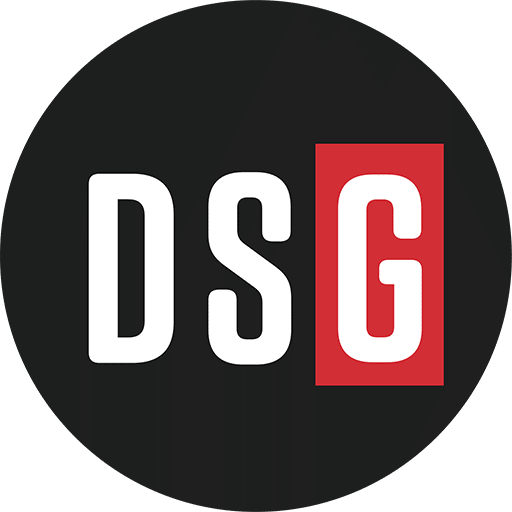Supply Chain Equity Partners (SCEP) is North America’s only committed capital private equity firm focused on making investments in the distribution and logistics industry. Jay Greyson is a co-founder and partner, serves on multiple distributors’ boards of directors and has been named Dealmaker of the Year, the highest individual honor in M&A awarded annually to one “dealmaker” in North America.
In this discussion, Ian Heller talks with Greyson about distribution industry trends in M&A and how distributors can prepare for an equity event.
Ian Heller: You’re known as one of the most knowledgeable and experienced people in mergers and acquisitions in the wholesale distribution industry. Can you walk us through your background and how you got involved in M&A in the wholesale distribution industry?
Jay Greyson: I’ll start by saying we have a great team at Supply Chain Equity Partners. We are the only private equity firm in North America dedicated exclusively to investing in the distribution industry for well over 20 years. I started in engineering and worked my way up through the business world. Over my career, I’ve built and run various distribution and manufacturing businesses, as well as managed sales, marketing and operations teams. At Supply Chain Equity, I typically serve as the non-executive chair of our businesses and work with management teams to refine their value proposition and go-to-market strategies to accelerate their growth and profitability.
Heller: Is that typically an area where distributors could be stronger than they are in terms of clarifying their value proposition and putting together the right go-to-market strategy?
Greyson: It’s an interesting question. We invest in distribution businesses that can be as small as $10 million in revenue, and we’ve invested in companies that are half a billion dollars-plus in revenue. We have a very unique model that allows for that. As you can imagine, the larger distributors will typically have more of a refined value proposition than some of the small ones. But that’s not always the case. When you have an owner-entrepreneur running a business, sometimes they’ve just found phenomenal value propositions and go-to-market strategies, and they are doing a phenomenal job in their niche.
In the world of distribution, we’re a transaction-based business. We’re fighting daily for that order, that customer and for that business. It’s often hard for business owners to step back from the fray to think about exactly what value they bring to the customer. When was the last time they did a customer survey or received direct feedback? When was the last time that the owner or executive management team visited key customers to talk about how to enhance value in the relationship? That’s where we can help; we bring knowledge in these areas through over a hundred distribution transactions.
One of the first things we do after making an investment is set up a strategic planning process and program. We bring together phenomenal outsiders, the executive team and key players in sales and marketing to discuss and refine that value proposition. We identify and quantify our customer segments, evaluate our value propositions today and preliminarily determine what we can change to enhance our value to customers. Looking forward, what are the macro and micro changes coming up, and how do we ensure we are at least a fast follower if not an innovator?
Heller: What makes a good distribution target for your investments, and how do you differentiate between good and bad distributors from an investment perspective?
Greyson: Margins are not the main thing. In doing this for 20 years, there’s a secret sauce in how we look at distribution businesses. We assess distributors based on a few key factors. We look at their vendor relationships and diversification, and we evaluate if they have the right vendors for their markets and if they are important to those vendors. On the customer side, we analyze the end-markets, customer needs and growth potential. The value proposition connecting vendors and customers and the distributor’s ability to remain relevant in the long term is crucial. Importantly, we try to determine if it is attractive to us now, and will the company be able to thrive 10, 20, 30 years down the road. That’s a high level, and there’s a lot of work underneath to what we do.
Heller: Can you provide an example of a great end-market for distributors and a bad end-market for distributors?
Greyson: There’s no one-size-fits-all answer to what makes a great or bad end-market for distributors. It depends on the distributor’s strength of their value proposition. Is it large enough for us to serve, and are the capabilities we’re bringing to that end-market valued by the end-market today? We think of tomorrow in terms of five and 10 years from now. How can we modify the value proposition to make sure that the company remains viable and can thrive over the long term?
Remember, there are almost 250,000 distributors and 109 subsegments of distribution. If you look around the room, everything from that room came from a distributor. There are various people that have different outlooks on each of those 109 subsectors. Your view varies by where you are in the economy and how you perceive those sub-sectors performing in today’s environment and in the future. I can’t say there are any good or bad.
Heller: When is the right time for distributors to consider engaging with private equity firms like yours for potential investments or transitions?
Greyson: Privately held distributors should start thinking about their next steps well in advance before it’s too late. We see a lot of great businesses, but all too often when we dive deep into those businesses, we realize that the business is largely unsaleable. A classic example of a business wherein the owners are now in their 70s, they are the lead salesperson and essentially control 50% of the top customers, and no succession plans have been made which is at best is risky and can take years. The business has just been existing and slowly eroding over time
I urge distributors to think about your strategy. Do you want to remain independent and be a platform? Are you building a business and thinking at some point you want to be part of a larger business? Then, you’ll probably want to direct your limited funds, bandwidth and capabilities towards different areas of the business to be ready for that end result. The key is to prepare in advance.
Have that succession plan in place. We often have discussions for five, sometimes 10 years with a distributor that’s not ready to do something now but wants to know they are maximizing value and getting prepared for the next step. Many of our best partnerships and acquisitions have been those in which we have 10+ year relationships helping them get ready.
Heller: If I want to build a platform company or if I want to understand whether my company is a prospect to be a platform company, are there certain size assumptions, requirements, business models or competencies that make a good platform distributor?
Greyson: It’s specific to the company, its niche and service. However, there are some general attributes we look for in any business. Are they a critical link in the supply chain? Will they be a critical link not just today, but tomorrow and 10 years out? Do they have a distinct advantage where Amazon will not disintermediate them, or take them out of the market in the future? We look at the customer base and determine if they are attractive end-markets. Does our value proposition match up with those customers? Are we important to them? Do I have the right vendors to serve those customers?
Heller: How do you build sales teams in distributors?
Greyson: That’s an area we talk to our partner distributors about sooner rather than later. In terms of go-to-market strategies, a lot of distributors still have the go-to-market strategy and sales team organization that they had 10, 20, 30 years ago. You have to step back and look at what the customers need and want. They may not need or want a salesperson dropping by once a week or twice a week; they’re so busy fighting their own fires at a customer level. COVID changed everything dramatically. All of a sudden, salespeople can’t get in there. So, they need to find a different way to go to market. We work with them and their managers for this customer set and decide how they want to be served. We help them think how they can best get value from our relationship without wasting their time.
Regarding sales teams, about half of the distributors that we invest in don’t have an inside sales organization. We often view such a team as being very important because there are often many customers that can be best served with an inside sales team over an outside sales team when one considers the cost to serve. Inside sales can most economically serve and grow the smaller customers and over time many will hopefully rise to the level of justifying outside sales support. And we think it’s important to tie inside and outside sales together in certain respects, such as allowing and incentivizing a hand-off when the smaller customers have large projects that warrant outside sales involvement.
Heller: There are a lot of ESOPs in distribution. Have you acquired ESOPs before?
Greyson: We have invested in companies with ESOPs and sometimes the ESOP is part of the business and sometimes is part of the transaction. Often the prior owner wants to pay out the ESOP members, and it gets terminated at closing. There are many schools of thoughts, and I want to be respectful of the audience. I think some of the audience members here are part of ESOPs and some are not. There are absolutely advantages to ESOPs when you have a team of people that are equity shareholders. They’re invested in this company; one hopes that they would tend to act more like owners, and you hope that they take better care of their customers because of that. We’ve also seen ESOPs where you have a large number of ESOP-holders and they don’t value it at all. They get a statement every quarter or every year, and it is what it is. They don’t ascribe any value to it. And when you don’t ascribe value to something, it doesn’t change your behavior. I’ve seen more ESOPs over my career that the individuals are in that latter part.
The one thing that is a challenge with ESOPs is that you have mandatory redemptions. A big part of your cashflow is going to go to pay out people once they retire. We have seen companies that have actually approached us to purchase the business and, at the same time, they want to terminate the ESOP because those payouts are just literally killing their ability to invest in growth and go forward. So again, for the right company, the right situation, it can work, but there are two sides to the coin.


